This is one of a multi-part series dedicated to sharing new and inspiring discoveries at the National Gallery of Art in Washington, DC this summer.
A group of friends from the Art League decided that a Black Friday was a Friday without art education. The void in Fridays from the end of our spring term session to the start of the fall was simply unbearable. A natural leader among us took action and set up an appointment with the Associate Curator of Old Master Prints and Drawings at the NGA so that we could view and study a selection of artwork.
The pieces we saw are part of the NGA permanent collection housed in The East Wing but not on display. They are stored but available for view by special request. The group submitted its request and the curator graciously assembled them for us to see and study at leisure.
Since the works are part of the Permanent Collection, we were allowed to photograph them without use of flash.
The experience was invaluable. The curator allowed us to examine each piece up-close with a magnifying glass and study the intricate details of silverpoint and other drawing media without the disturbing glare of glass.
Below are some pieces by great masters that we requested and saw:
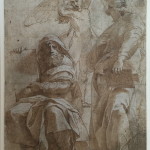
Raphael, Marchigian, 1483 – 1520
The Prophets Hosea and Jonah, c. 1510
pen and brown ink with brown wash over charcoal and blind stylus, heightened with white gouache and squared for transfer with blind stylus and red chalk, on laid paper
overall: 26.2 x 20 cm (10 5/16 x 7 7/8 in.)
The Armand Hammer Collection 1991.217.4
-
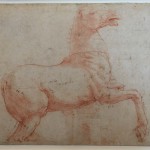
Raphael, A Marble Horse on the Quirinal Hill - red chalk and pen and brown ink, with stylus underdrawing and traces of leadpoint on laid paper
- overall: 21.9 x 27.4 cm (8 5/8 x 10 13/16 in.)
- Woodner Collection 1993.51.3.a
-
- Dürer, Albrecht, German, 1471 – 1528
-
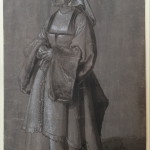
Durer, Young Woman in Netherlandine Dress
Young Woman in Netherlandish Dress, 1521- brush and brown and white ink on gray-violet prepared paper
overall: 28.3 x 19.8 cm (11 1/8 x 7 13/16 in.)
- Widener Collection 1942.9.658
-
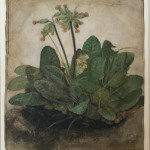
Durer, Tuft of Cowslips
Tuft of Cowslips, 1526- gouache on vellum
- overall: 19.3 x 16.8 cm (7 5/8 x 6 5/8 in.)
- The Armand Hammer Collection 1991.217.1
-
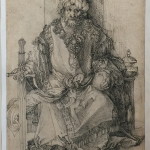
Durer, An Oriental Ruler Seated in his Throne
An Oriental Ruler Seated on His Throne, c. 1495- pen and black ink on laid paper
- overall: 30.6 x 19.7 cm (12 1/16 x 7 3/4 in.)
- Ailsa Mellon Bruce Fund 1972.22.1.a
-
- Leonardo da Vinci, Florentine, 1452 – 1519
-
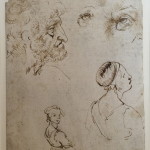
Leonardo, A Sheet of Studies
Sheet of Studies [recto], probably 1470/1480- pen and brown ink over black chalk on laid paper
- overall: 16.4 x 13.9 cm (6 7/16 x 5 1/2 in.)
- The Armand Hammer Collection 1991.217.2.a
-
- Rubens, Peter Paul, Sir, Flemish, 1577 – 1640
-
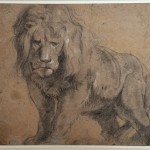
Rubens, Lion
Lion, c. 1612-1613- black chalk, heightened with white, yellow chalk in the background
- overall: 25.2 x 28.3 cm (9 15/16 x 11 1/8 in.)
- Ailsa Mellon Bruce Fund 1969.7.1
-
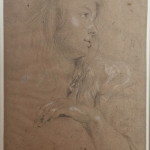
Rubens, Young Woman in Profile
Young Woman in Profile, c. 1613- black chalk heightened with white
- overall: 37.5 x 25.1 cm (14 3/4 x 9 7/8 in.)
- Ailsa Mellon Bruce Fund 1978.18.1
-
- Rembrandt van Rijn, Dutch, 1606 – 1669
-
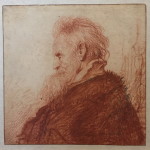
Rembrandt, Head of an Old Man
Head of an Old Man (recto), c. 1631- red chalk, with touches of black chalk, on laid paper
- overall: 13.7 x 13.8 cm (5 3/8 x 5 7/16 in.)
- Gift of Mrs. Lessing J. Rosenwald 1987.20.11.a
-
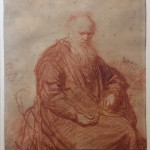
Rembrandt, Seated Old Man
Seated Old Man, 1630- red chalk on laid paper
- overall: 15.7 x 14.7 cm (6 3/16 x 5 13/16 in.)
- Rosenwald Collection 1943.3.7047
-
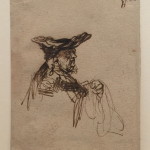
Rembrandt, Bust of Elderly Man with a Flat Cap
Bust of an Elderly Man in a Flat Cap, 1635/1637- pen and brown ink on laid paper
- overall: 8.4 x 6.9 cm (3 5/16 x 2 11/16 in.)
- Widener Collection 1942.9.677
Meissonier, Jean-Louis-Ernest, French, 1815 – 1891
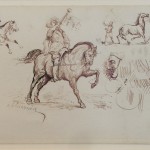
The Herald of Murcia and Other Studies (recto)
The Herald of Murcia and Other Studies (recto), c. 1860
pen and brown ink on wove paper
overall: 14.9 x 22.4 cm (5 7/8 x 8 13/16 in.)
Gift of Athena Tacha and Richard Spear 2004.152.1.a
-
- Manet, Edouard, French, 1832 – 1883
-
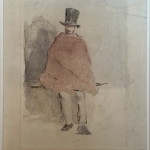
Manet,
The Man in the Tall Hat
The Man in the Tall Hat, 1858/1859- watercolor and graphite
- overall: 35.7 x 25.7 cm (14 1/16 x 10 1/8 in.)
- Rosenwald Collection 1943.3.5753
-
- Prud’hon, Pierre Paul, French, 1758 – 1823
-
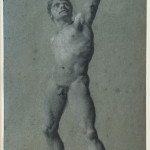
Prud’hon, Male Nude Study - charcoal heightened with white chalk on blue paper
- overall: 45.3 x 25 cm (17 13/16 x 9 13/16 in.)
- Gift of Howard Sturges 1956.9.11
All of the photos of the works listed above were captured with an iPhone6. They have been digitized on the NGA website with far greater quality, but there is no substitute for seeing these drawings in person. It is the best way to study the paper and the materials and techniques used by each artist. The certainty of Messonier’s ink strokes leaves no doubt of his expertise depicting horses and riders with fluid motion and energy. We see strength and energy in Prud’hon’s nude, as well, but the manner in which the charcoal meaningfully dissolves into the background as the light rolls around the form is indescribable other than through first-hand experience. Likewise, Rembrandt’s strong red chalk juxtaposed with Rubens’s ephemeral black chalk demonstrates through contrast the absolute mastery of each artist. Durer’s gouache makes you want to touch the velveting leaves of the cowslip, while his playful treatment of the Oriental Ruler seems whimsical despite its carefree precision. Raphael’s commanding portrayal of both prophets and horse on small pieces of paper reflects the restrained force of his statuesque subjects. Adjectives and verbs aren’t enough here. However, experiencing these great works is possible for free just by asking for an appointment!








































Leave a Reply